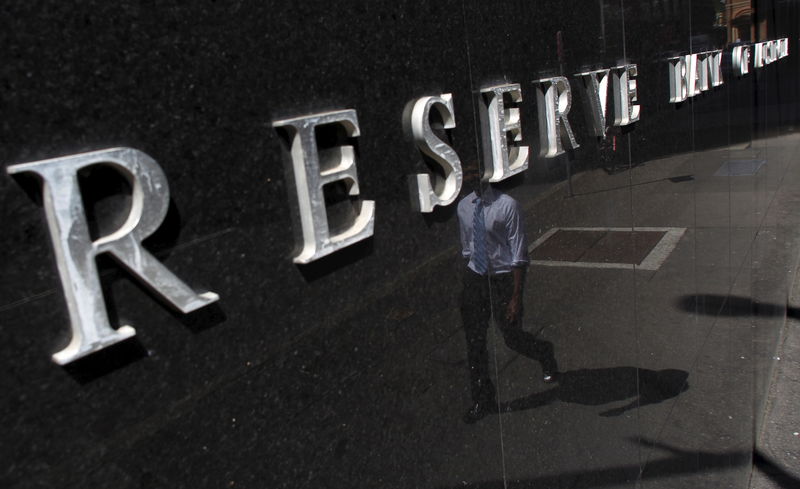Investing.com-- The Reserve Bank of Australia is widely expected to keep interest rates unchanged at the conclusion of a meeting on Tuesday, with focus turning to when the central bank could begin cutting rates.
The RBA is expected to keep its benchmark cash rate unchanged at 4.35% after last hiking the rate in late-2023, a Reuters poll showed. The central bank had raised rates steadily over the past two years to combat high inflation.
Recent data showed headline consumer price index inflation fell within the RBA’s 2% to 3% annual target range in the third quarter. But underlying inflation, which excludes volatile food and fuel prices, remained high, although analysts said the reading was still in line with the RBA’s expectations.
Still, with the prospect of relatively sticky inflation, as well as recent data showing persistent strength in Australia’s labor market, the RBA is likely to keep rates unchanged in the near-term, while offering scant cues on plans to begin cutting rates.
RBA Governor Michele Bullock has repeatedly signaled that inflation is still too low to consider cutting rates. Bullock only expects inflation to sustainably fall within the RBA’s target in the next two years.
“Risks of a further rate hike have faded, but neither do recent data imply that rate cuts need to be brought forward from our current expectations,” Luci Ellis, Chief Economist at Westpac Group wrote in a recent note.
Ellis only expects the RBA to begin cutting rates from February 2025. Analysts at ANZ mirror this notion, and also expect the cash rate to fall to 3.6% by end-2025.
ANZ expects the RBA to shift more towards a neutral stance in its November meeting, but sees little cause for the central bank to begin cutting interest rates soon.
“We don’t expect the Board to explicitly consider an increase in the cash rate at this coming meeting. Nor do we expect it to explicitly consider a cash rate reduction just yet, although that point is approaching,” ANZ analysts said.
The RBA’s tendency to hold rates in the near-term is in contrast to rate cuts from several other major central banks, most notably the Federal Reserve. The Fed is also set to meet this week and is expected to cut rates by 25 basis points after a 50 bps cut in September.
How will the ASX 200 react?
The ASX 200 stock index shot up to record highs in October, benefiting from increased risk appetite as other major central banks began cutting interest rates. While the index has since retreated from those peaks, any speculation over local interest rate cuts is likely to spur strength in Australian stocks.
Conversely, any hawkish signals from the RBA are likely to weigh on the ASX.
How will the AUDUSD react?
The Australian dollar weakened in recent weeks on the prospect of a less hawkish RBA, with the AUDUSD pair hitting a near three-month low in October.
While the RBA keeping rates on hold is expected to afford the AUD some strength, the currency is likely to weaken further amid increased speculation over when the central bank will begin cutting rates.
